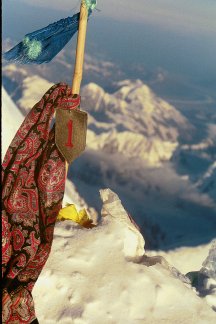
The youngest son (immediately to the right of his mother)
of the three Fuhr boys, Gerhard, served in the United States Army with the
1st Infantry Regiment along the Four Powers border in Germany. Gerhard
died in April 2002. Gerhard Fuhr's Big Red
One shoulder patch rests at the summit (20,320 feet) of
Mt. McKinley, placed their by his nephew on July 24, 2001. Photograph
below is courtesy of Rob Fuhr.

